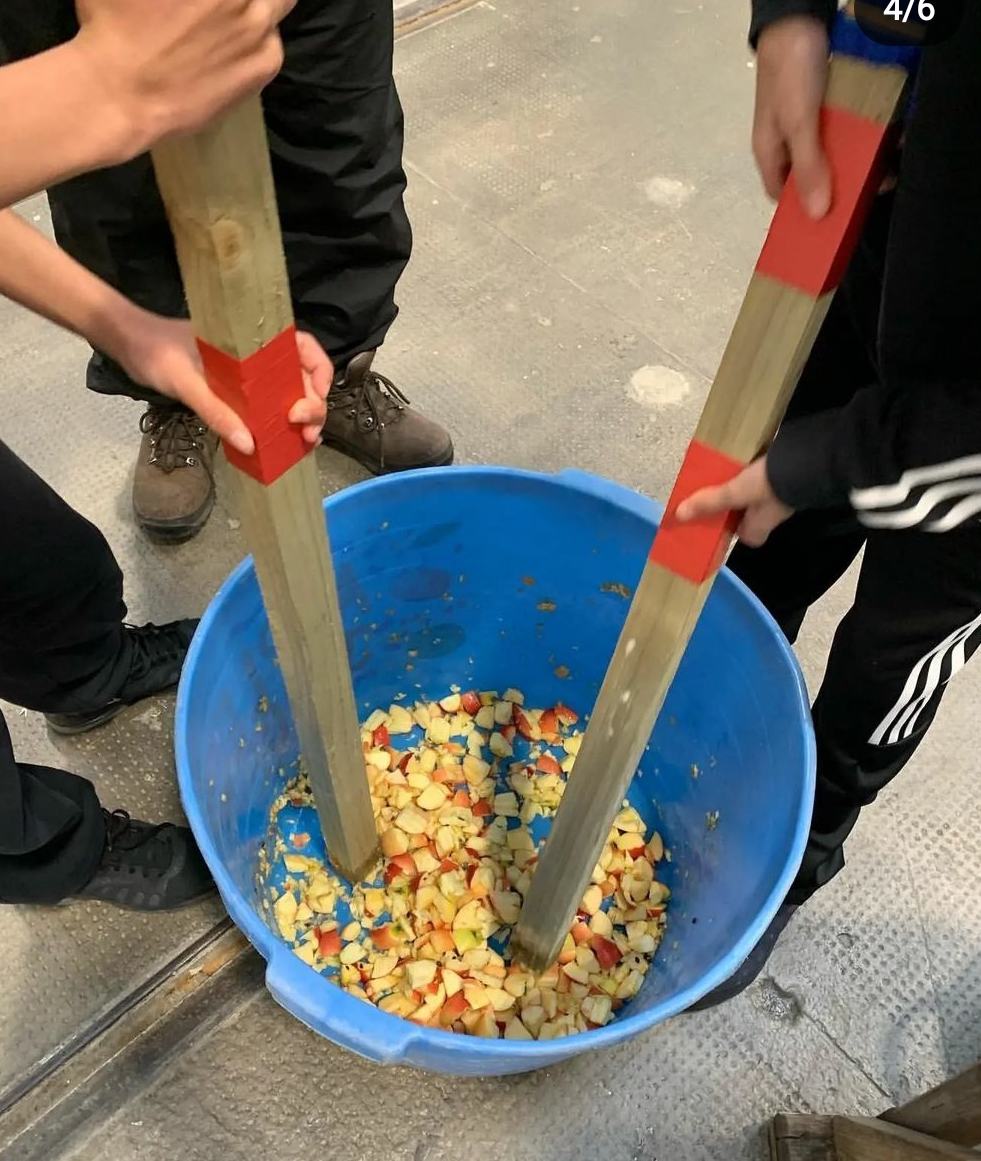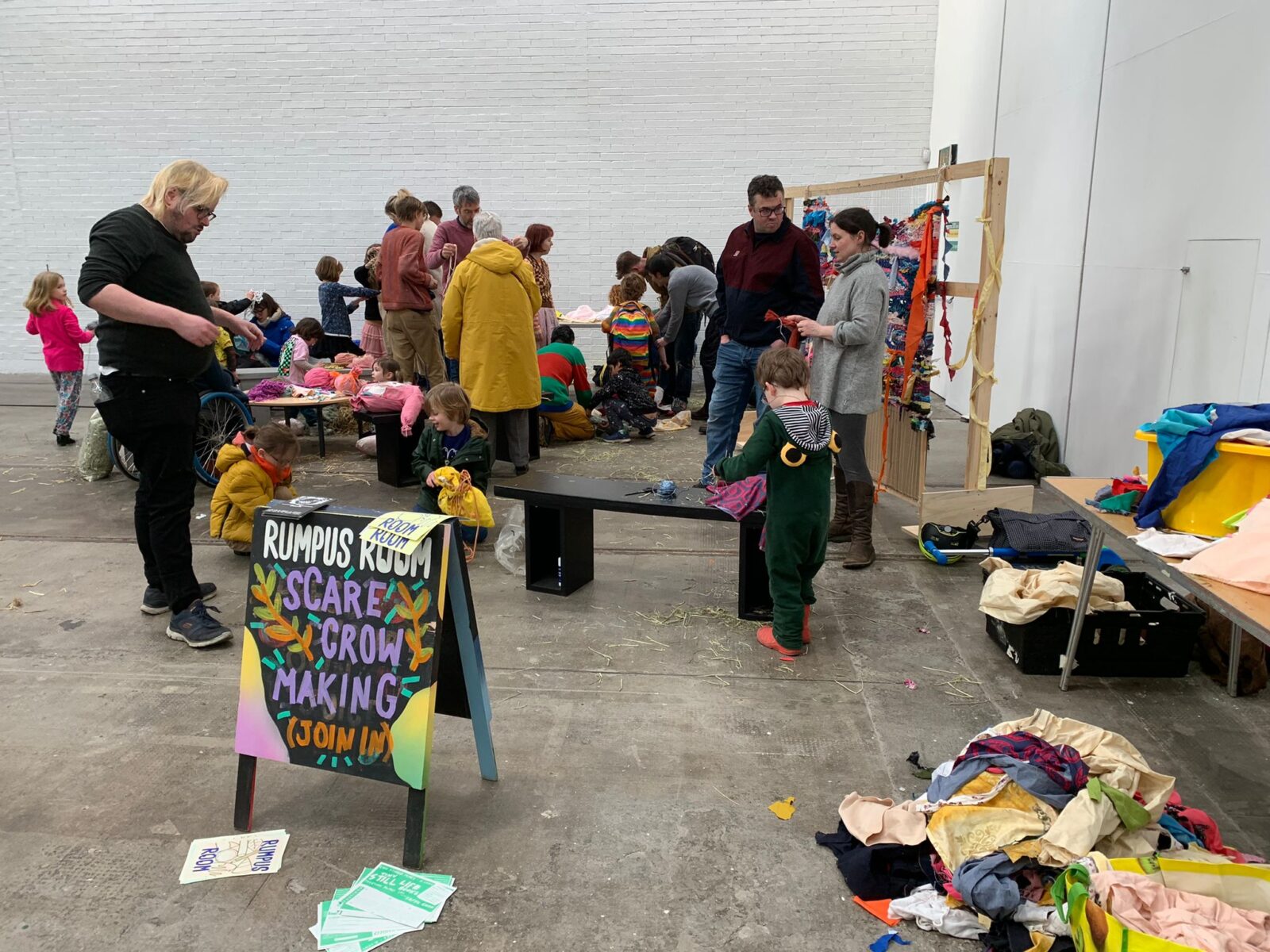By Ardis Önnerfors –

We were invited by Tramway to host a series of workshops in response to the exhibition The Rumble of a Tireless Land by Iza Tarasewicz last month. The workshops connected with the theme of rural systems of production and people of all ages were invited to get involved. The last weekend of January, we held our last two sessions in this series and thought a summarising blog post might be well-timed now.
The first workshop was held in early December hosted by Rachel & Leo from the studio and invited people to take part in the full process of making apple juice, from hard fruit to soft drink in the gallery. Using our custom built wooden framed apple press we washed, chopped, mashed, squashed, drunk and reviewed our very own apple juice. The DIY apple press was made by a friend and his Dad and brought to Rumpus for our Harvest Festival this year. We adapted it using a tractor jack for extra power. So far we’ve pressed and drunk 25 litres of Southside apple juice with apples from Queens Park & Gorbals Orchards and local parks, gardens and roadside apple trees. Our pressing sessions at the Tramway provided a lively contrast to the rural farming appliances you are forbidden from touching in the exhibit.




For the second workshop I wanted to host a group weaving session but we didn’t have the tools, in this case a giant weaving loom, at our disposal, so we had to make one ourselves! With the help of Rumpus’s friend Gene of Plant Grow Share, we made our very own loom. It was completed fast and made entirely out of recycled timber, adding a great resource for future weaving adventures at our studio.
Our aim was to weave a communal rag rug at the Tramway workshop out of our own reserves of discarded fabric, using pieces only fit for stuffing to brighten up our studio. The loom attracted many, both young and old and gallery attendees. The repetitive motion was generally conceived as ‘meditative’ and social connections were also woven as we worked; strangers realising they were from the same hometown and neighbours meeting outside their stairwells. At most, we probably fitted about 15 pairs of working hands around the loom at the same time, and generated many meaningful conversations about working with your hands, reuse, and the rag rug tradition.

In the closing workshop we made scarecrows together. By using second-hand children’s clothes, sticks, bags of hay, and plenty of imagination (especially when our materials started running out – shout out to the mini scarecrows!), the children and families involved created a beautiful line up of scary crop protectors. It was a very busy workshop, and we brought out the loom alongside the scarecrow making for those who wanted a quiet moment patching up holes in the rug. By the end of the day the rug was almost finished, ready to be taken (walked) down Victoria Road to the studio (it didn’t fit in the van…) and taken off the loom.



We look forward to using these techniques and tools over and over again in the future. The beauty of rural methods of production is that by participating in them we form a link in the long and rich histories of these life-sustaining practices. By gathering young and old attendees to participate in them we not only mark the passing of time, as many of them are entwined with the cycles of nature, but also generate a deeper understanding of the value of working together. A rag rug takes a long time to make, but with many hands it is quick work. It might not turn out in any way you had imagined, but that unpredictability yields beautiful results.
